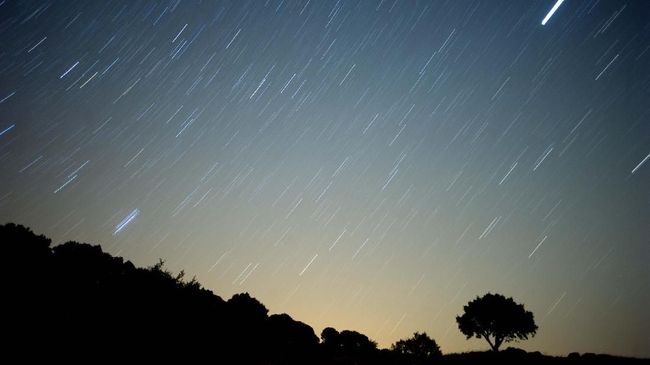Jakarta, CNN Indonesia —
Rain Meteor Leonid is part of a space phenomenon that can be seen directly by Earthlings this month.
This week is the first part of the Leonid meteor shower whose peak is expected to occur next week or on Wednesday (17/11) morning. Here’s how to see the Lenoid meteor shower.
Reported The Guardian, the chart shows the view of the Leonid meteor shower seen over London at midnight the turn of the day from November 16 to 17. Meanwhile in Sydney, Australia, the constellation Leo will rise a few hours later.
The name Leonid is taken because they appear to radiate from a point in the constellation Leo. The beam of light is located just below the lion’s head, but don’t look at it directly when looking for a shooting star.
Meteors appear in all directions around the beam, so keep scanning the sky around that location. Meteors are best viewed from the darkest location you can find.
This year the light from the waxing gibbous moon will interfere with your vision of the Leonid meteor as it sweeps away some of the fainter meteors. In very dark conditions without a moon, you can see about 10-15 meteors per hour.
The number of meteors is expected to be less. But if you are more patient, a single bright meteor can give you memories for a lifetime.
You’ll get the best picture of the Leonid meteor shower depending on when you see it, where you see it, and on the clarity and darkness of the night sky when you see it.
However, it is recommended that the best time to see it is before dawn after the moon has set.
Leonid Meteor Shower in 2021
The November Leonid meteor shower is known as a periodic storm of historic proportions, when stars fall like rain. While no storms are predicted for Leonid in 2021, you can still catch plenty of meteors between November 6 and 30.
The meteor is generated from Earth crashing into the orbit of Comet 55P/Tempel-Tuttle. Comets litter their orbits with debris. These pieces of dust hit Earth’s atmosphere and evaporated, creating the light we know as meteors.
In 2021, the moon is in a gibbous waxing phase. The moon will orbit most of the night, brightening the sky and sweeping away many meteors.
Continue to the next page..
Location of the Leonid Meteor in the Sky
–
– .

